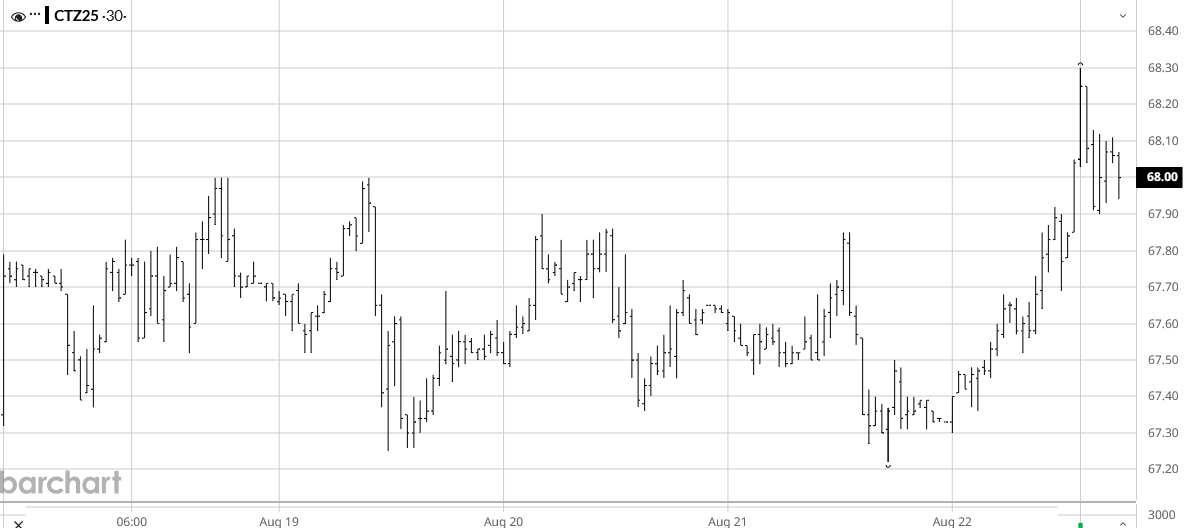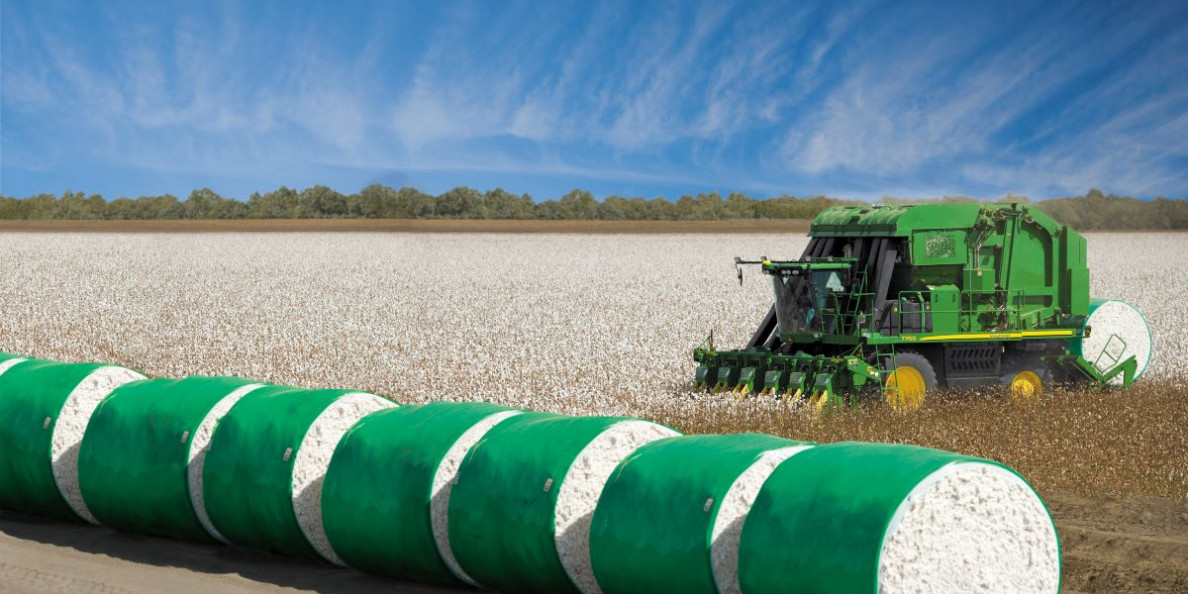The week ending Friday, August 22 saw ICE cotton futures trade in a narrow sideways band into Friday before shooting up to the weekly highs (see chart above courtesy of Barchart.com). The Dec’25 contract settled Friday at 68.01 cents per pound, while the Dec’26 settled the week at 69.50 cents. Chinese cotton prices and the A-Index of world cotton prices both traded flat/mixed across the week.
Other commodity futures markets showed different patterns for the week ending August 22. CBOT corn and soybeans both traded flat before stair-stepping higher on Thursday. KC wheat futures followed a flat sideways pattern. ICE WTI crude oil futures trended higher across the week. The U.S. dollar index trended higher most of this week, before plunging Friday in apparent reaction to changing expectations of imminent U.S. interest rate cuts. Other macro influences (i.e., GDP, inflation, and interest rate policy) remained mixed in their expectation and implication for slow economic growth.

Cotton-focused market influences for the week ending August 22 included continued weekly reports of very light to moderate regional demand for U.S. cotton, along with light supplies. Weekly net sales for the 2025/26 marketing year were modest at only 106,400 bales of all cotton for the week ending August 14.
Agronomic influences included widely scattered showers across the Cotton Belt, with the greatest accumulations in the Southeast from Hurricane Erin. Hopefully these rains won’t impact standing cotton in the Carolinas since they were less than 10% open boll as of August 17. On the other side of the world, the precocious Indian monsoon has brought above average rains that have likely increased plantings of summer sewn crops, including cotton. The second half of the monsoon season was forecasted to be average in August and above average in September. This could boost Indian and Pakistani production, perhaps at the expense of demand for U.S. exports.
For the week ending August 21, the day-to-day shifts in ICE cotton open interest were modestly increasing across the week, while daily price settlements were flat/mixed. The regular weekly (Tuesday, August 19) snapshot of speculative open interest showed mixed re-positioning with 1,525 fewer hedge fund longs, week over week, which was outweighed by 5,313 fewer hedge fund shorts. The index trader net long position expanded by 702 positions compared to the previous week.
The dynamics of ICE cotton futures may also represent a wet blanket on the market. It remains true that unfixed call sales (by mills) are at an historically low level, perhaps reflecting the cautionary buying on the demand side. In terms of ratios, unfixed call purchases (by suppliers) outweigh unfixed call sales by two-fold across all contracts, as of August 15. For the Dec’25 contract alone, there were three unfixed call purchases for every unfixed call sale.
For more details and data on Old Crop and New Crop fundamentals, plus other near term influences, follow these links (or the drop-down menus above) to those sub-pages.
Πηγή: TAMU

